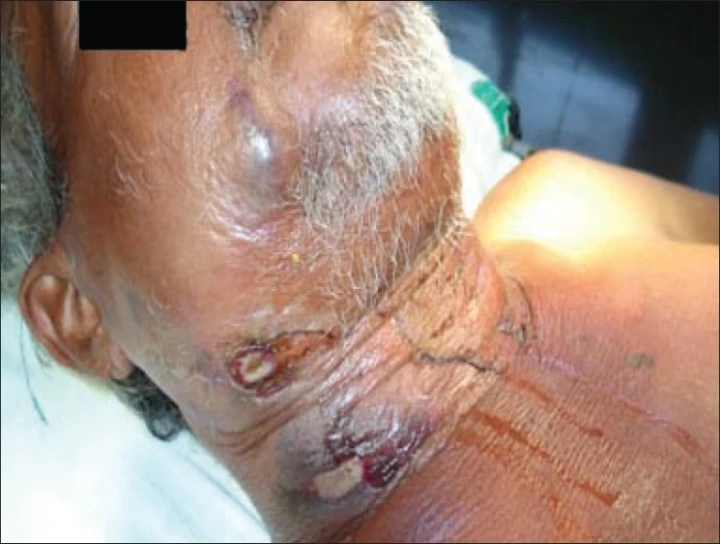
Cervicofacial necrotizing fasciitis, often referred to as "flesh-eating bacteria syndrome," is a severe and rapidly progressing soft tissue infection affecting the neck and face. It is characterized by the aggressive destruction of fascial planes, muscle, and subcutaneous tissue by certain bacteria, typically group A Streptococcus or mixed aerobic and anaerobic organisms. This condition represents a medical emergency due to its potential for extensive tissue damage, systemic complications, and mortality if not promptly diagnosed and treated.
The onset of cervicofacial necrotizing fasciitis is often insidious, with symptoms initially mimicking less severe infections, such as cellulitis or abscesses. However, the infection quickly escalates, manifesting as severe pain disproportionate to physical findings, rapidly spreading erythema, swelling, and crepitus, indicating gas formation within the tissues. Systemic signs of infection, including fever, tachycardia, and hypotension, may also develop as the infection progresses.
Prompt recognition and intervention are critical in managing cervicofacial necrotizing fasciitis. Diagnosis is primarily based on clinical evaluation, supported by imaging studies such as computed tomography (CT) or magnetic resonance imaging (MRI) to delineate the extent of tissue involvement. Laboratory tests, including blood cultures and inflammatory markers like C-reactive protein (CRP) and white blood cell count, aid in confirming the diagnosis and monitoring disease progression.
Treatment typically involves aggressive surgical debridement to remove necrotic tissue and control the spread of infection, often necessitating multiple procedures. Broad-spectrum antibiotics targeting both aerobic and anaerobic bacteria are administered empirically and adjusted based on culture and sensitivity results. Supportive measures, including fluid resuscitation, pain management, and intensive care monitoring, are crucial in managing systemic complications and optimizing patient outcomes.
Despite advances in medical and surgical management, cervicofacial necrotizing fasciitis remains associated with significant morbidity and mortality, particularly in cases of delayed diagnosis or inadequate treatment. Early recognition, aggressive intervention, and multidisciplinary care involving oral and maxillofacial surgeons, infectious disease specialists, and critical care teams are essential in improving outcomes for patients affected by this devastating condition.


No Any Replies to “Cervicofacial Necrotizing Fasciitis- The Flesh-Eating Bacteria Syndrome”
Leave a Reply